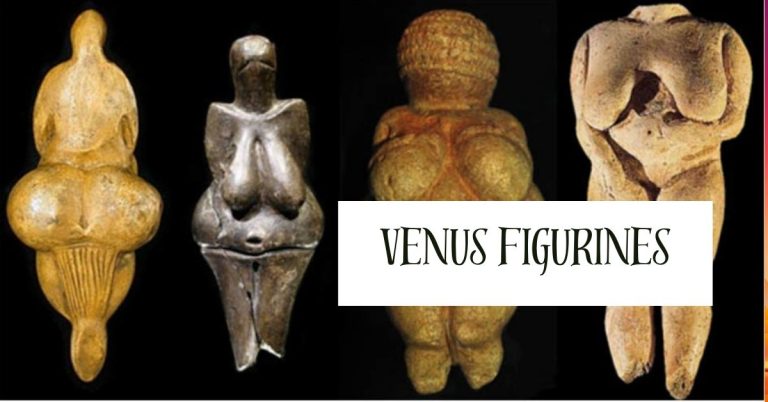Terra: Goddess of the Earth
Terra, the Roman goddess of the Earth, represents a captivating and transcendent presence within Roman mythology. Symbolizing the profound connection between humanity and the natural world, she stands at the intersection of ancient Roman culture and the enduring forces of nature. Known as Tellus in some contexts, Terra embodies the very essence of Earth’s nurturing and life-sustaining qualities, divine energy intricately woven into the collective consciousness of the Roman people. Her mythology fascinates scholars and enthusiasts alike, serving as a testament to the enduring power of ancient mythological traditions.
Overview of Terra
Terra, also known as Tellus in certain contexts, is a revered and fundamental deity in Roman mythology. She embodies the essence of the Earth, representing the nurturing and life-giving qualities that are intrinsic to our planet. The name Terra is derived from the Latin word “terra,” which means earth, emphasizing her significant influence over the terrestrial realm (“Terra (Mythology)”).
In Roman mythology, Terra is regarded as the mother of all living beings, and her embrace is associated with fertility, growth, and abundant harvests. Her maternal figure is further highlighted by her epithet, Terra Mater, which underscores her position as the mother of the Earth (“Terra Mater Mythology, Powers & Symbol | Roman Goddess of the Earth”). This exploration aims to unveil the intricate layers of Terra’s persona, including her titles, potent and benevolent abilities, captivating physical characteristics, endearing personality traits, symbolic representations, and vibrant festivals and rituals that pay homage to her. Through this journey, we discover a deity whose enduring legacy transcends the bounds of mythology, nurturing not only the Earth but also the soul of ancient Rome.
Source: Pinterest
Titles
- Mother of the Gods
- Great Mother
- Mother of the Earth
Abilities
The divine attributes of Terra are intimately linked to her position as the Earth goddess, imbuing her with unparalleled abilities that profoundly impact nature and human society (“Terra Mater Mythology, Powers & Symbol | Roman Goddess of the Earth”). At the heart of her divine nature lies the remarkable power to nurture and sustain all living beings, an essential facet of her identity that has resonated deeply within Roman culture. One of Terra’s most renowned abilities is her benevolent influence over the land’s fertility, a force foundational to Roman society’s agricultural prosperity. The Romans, a civilization heavily reliant on agriculture, held Terra in high esteem for ensuring the land’s fertility. Farmers, in particular, recognized her as the source of their livelihoods, fervently invoking her name, seeking her blessings and safeguarding, which underscored Terra’s pivotal role in the delicate balance of sustaining life (“Terra (Mythology)”).
Terra’s divine providence extended far beyond agriculture, permeating every aspect of Roman life. Her influence was evident in the abundant harvests that nourished the populace, the growth of cities and settlements that thrived upon fertile lands, and the prosperity that stemmed from her benevolence. Terra’s abilities were a cornerstone of Roman society, exemplifying the interconnectedness between the goddess and those who relied upon her to flourish. In a world where the Earth’s bounty was synonymous with survival, Terra’s role as the Earth goddess was paramount. Her ability to nurture and sustain life was a testament to her benevolent nature, her influence rippling through the fields, the granaries, and the heart of the Roman civilization she nurtured and protected.
Characteristics
The divine attributes of Terra are intimately linked to her position as the Earth goddess, imbuing her with unparalleled abilities that profoundly impact nature and human society (“Terra Mater Mythology, Powers & Symbol | Roman Goddess of the Earth”). At the heart of her divine nature lies the remarkable power to nurture and sustain all living beings, an essential facet of her identity that has resonated deeply within Roman culture. One of Terra’s most renowned abilities is her benevolent influence over the land’s fertility, a force foundational to Roman society’s agricultural prosperity. The Romans, a civilization heavily reliant on agriculture, held Terra in high esteem for ensuring the land’s fertility. Farmers, in particular, recognized her as the source of their livelihoods, fervently invoking her name, seeking her blessings and safeguarding, which underscored Terra’s pivotal role in the delicate balance of sustaining life (“Terra (Mythology)”).
Terra’s divine providence extended far beyond agriculture, permeating every aspect of Roman life. Her influence was evident in the abundant harvests that nourished the populace, the growth of cities and settlements that thrived upon fertile lands, and the prosperity that stemmed from her benevolence. Terra’s abilities were a cornerstone of Roman society, exemplifying the interconnectedness between the goddess and those who relied upon her to flourish. In a world where the Earth’s bounty was synonymous with survival, Terra’s role as the Earth goddess was paramount. Her ability to nurture and sustain life was a testament to her benevolent nature, her influence rippling through the fields, the granaries, and the heart of the Roman civilization she nurtured and protected.
Source: Wikipedia
Traits
Artists and sculptors have often captured Terra’s essence through depictions of a mature woman, radiating serenity and regality (“Terra Mater Mythology, Powers & Symbol | Roman Goddess of the Earth”). Such artistic choices are a tribute to her authority over the natural world and her profound role in maintaining equilibrium. In these artistic renderings, Terra is adorned with symbols drawn from the Earth’s abundant offerings, such as fruits, flowers, and grains, which symbolize fertility and abundance. These symbols serve as a visual testament to her influence over the land’s fecundity, remarkably embellishing her portrayal. Terra’s physical representation resonates deeply with the Roman psyche, providing a tangible connection to the harmonious balance of the Earth itself.
Moreover, Terra’s presence exudes an aura of tranquility, reinforcing her association with the peaceful rhythms of nature (“Roman Goddess Terra: Unveiling the Power and Significance of the Earth Personification in Roman Mythology – Old World Gods”). She embodies the serene stability of the Earth, an enduring force that cradles all life within its embrace. Such characteristics of Terra are highly valued and revered by Roman culture, as they provide a constant reminder of the Earth’s harmonious balance and peaceful coexistence.
Symbols
The prominence of Terra within Roman mythology and the reverence for the Earth she represents is evident in the various symbols associated with this deity. Foremost among these is the cornucopia, which is frequently depicted overflowing with fruits and vegetables, signifying Terra’s ability to bestow abundance and prosperity upon the land (“Roman Goddess Terra: Unveiling the Power and Significance of the Earth Personification in Roman Mythology – Old World Gods”). In artwork, Terra is often portrayed as holding or surrounded by agricultural products, such as grains and fruits, which embody her intimate connection to fertility and agriculture. This reinforces her role as the guardian of the Earth, ensuring its productivity and stability (“Terra (Mythology)”). Ultimately, Terra’s divine persona stands as the ultimate symbol of the land’s fertility and strength, encapsulating the essence of the Earth and its enduring legacy within Roman culture and mythology.
Source: Myth and Folklore Wiki
Festivals and Rituals
The festivals and rituals that honored the divine influence and role of Terra within Roman culture were a testament to the profound reverence that the Romans had for the Earth goddess. One such practice, the Fordicidia, held on April 15th, was a poignant way to ensure agricultural prosperity (“Terra Mater Mythology, Powers & Symbol | Roman Goddess of the Earth”). During this sacred event, a pregnant cow was ritually sacrificed to invoke Terra’s blessings upon the fields, symbolizing the renewal of fertility and the life cycle, which were integral to Roman agriculture and society.
Another significant observance was the Vinalia Rustica, celebrated on August 19th (“Terra (Mythology)”). This festival was dedicated to Terra and Jupiter, the king of the gods, and marked the onset of the grape harvest season. Offerings of wine were made to both deities, seeking their favor for a bountiful and successful grape harvest. The ritual emphasized Terra’s role in cultivating vineyards and producing wine, a vital aspect of Roman culture and commerce.
During winter’s chill, the Romans returned to Terra during Larentalia, observed on December 23rd (“Terra (Mythology)”). This festival featured offerings to Terra as a protective deity, invoked to shield the Earth and its inhabitants from the harshness of winter. The rituals during Larentalia symbolized the Romans’ unwavering belief in Terra’s capacity to safeguard and nurture, even in the face of adversity.
Intertwined with the Roman calendar, these festivals and rituals exemplify the depth of reverence and reliance on Terra within Roman culture. They reflect the profound connection between the Roman people and the Earth they inhabited, where Terra’s blessings and protection were sought for sustenance and the well-being of the entire civilization.
Source: Wikipedia
Legends associated with Terra
The deity of Terra, revered as the Roman goddess of the Earth, holds a significant place in ancient mythology and cultural traditions. The legends and stories surrounding Terra have shaped her identity and significance within the Roman pantheon over time. In this section, we will delve into some of the notable myths associated with Terra, thereby shedding light on her origins and the profound impact of these tales on her worship and perception.
Origin story
According to Roman mythology, Terra’s simplistic yet profound origin story speaks to her essential role as a foundational force within the natural world. As one of the primordial deities born from the chaos that preceded the universe’s formation, Terra emerged alongside other powerful entities, including Uranus (representing the sky) and Pontus (personifying the sea). Her very existence symbolizes the personification of the Earth, embodying its fertile and life-sustaining qualities (“Terra (Mythology)”).
This origin story carries significant weight and symbolism, with Terra’s birth from prehistoric chaos underscoring her enduring presence as the Earth’s guardian and nurturer. As the grounding force that sustains all life and order, Terra’s emergence from the chaos of the cosmos speaks to the idea that life and order can arise from even the most turbulent and chaotic circumstances. In this way, Terra represents not only the physical embodiment of the Earth but also the inherent power and resilience of the natural world.
Source: Adobe Stock
Mother of Humanity
The mythos surrounding Terra in Roman mythology are steeped in a narrative that highlights her integral role in the creation of humankind. According to this age-old legend, Terra was responsible for sculpting the first humans, fashioning them from the very Earth itself. Through her breath, these early beings were infused with life and imbued with a vital connection to the land (“Roman Goddess Terra: Unveiling the Power and Significance of the Earth Personification in Roman Mythology – Old World Gods”). This depiction of Terra as the mother of humanity underscores her maternal and nurturing qualities, emphasizing her status as the progenitor of all life. It speaks to the belief that the Roman people were inextricably linked to the land, owing their very existence and sustenance to the benevolence of Terra. In this way, the legend deepens Terra’s significance within Roman culture, casting her as the Earth’s protector and the matriarch of all living beings. It is a testament to the profound connection between the Roman people and the land they inhabited, with Terra as the revered source of life and vitality.
Source: Adobe Stock
The Fertility Goddess: Transformative Power
Terra holds a significant place in Roman mythology, primarily due to her association with fertility and abundance. Roman belief is that Terra possesses the extraordinary power to bestow fertility upon the land, facilitating the growth of crops and the flourishing of plant life. This vivid myth highlights Terra’s influence over the natural world and her transformative capabilities, where her touch could convert barren soil into verdant fields of abundance (“Terra Mater Mythology, Powers & Symbol | Roman Goddess of the Earth”). This captivating legend portrays Terra as the ultimate source of fertility and life-sustaining nourishment. Her divine touch symbolizes the transformative power of the Earth’s innate fertility, emphasizing her pivotal role in ensuring agricultural prosperity and the well-being of Roman society. The association between Terra and the land’s fertility reinforces her status as a benevolent and essential deity, deeply intertwined with the daily lives of the Roman people.
Source: Adobe Stock
Influences of other religions/cultures on Terra
The personification of Terra, the Roman goddess of the Earth, reflects a fascinating intersection of ancient belief systems and the cross-cultural exchange of ideas and symbolism. This influence extended beyond the confines of Roman mythology, resonating with Earth-related deities from various cultures. A notable example of this interplay can be observed in the parallel similarities between Terra and the Greek goddess Gaia, who played a role akin to Terra’s. Both Earth goddesses emphasized the interconnectedness of the Earth, underscoring their universal reverence as maternal and life-sustaining figures. It is believed that the Roman conception of Terra drew inspiration from the Greek Gaia, reflecting the cultural exchange and mutual recognition of the Earth’s importance. This cross-cultural influence demonstrates the interconnected nature of ancient belief systems, transcending geographical boundaries and emphasizing the shared understanding of the Earth’s significance as a maternal and life-affirming entity. Influenced by external sources, Terra’s role highlights how her significance resonated within the Roman context, across the broader Mediterranean region, and beyond, perpetuating the reverence for the Earth as a source of life and sustenance (“Terra (Mythology)”).
Modern appearances
The enduring legacy of Terra extends beyond the pages of ancient mythology and resonates as a symbol of environmental awareness and ecological consciousness in the modern era. Once a Roman goddess of the Earth, Terra now embodies the planet she personifies, reminding humanity of its profound responsibility to protect and preserve the Earth. Notably, Terra’s image features prominently in environmental movements and conservation efforts worldwide, aligning perfectly with the goals and ideals of contemporary environmentalists. As the guardian of the Earth, Terra symbolizes the planet’s fragile yet resilient beauty and the need for sustainable stewardship. Her presence in these movements underscores the interconnectedness between humanity and the environment, emphasizing that the Earth’s well-being is intrinsically tied to our own. As a symbol of environmental consciousness, Terra inspires a sense of responsibility and reverence for the natural world. Thus, her enduring presence in the modern discourse highlights the ongoing importance of honoring and protecting the planet we call home, aligning with her ancient role as the benevolent guardian of the Earth.
Source: Adobe Stock
Final thoughts
The enduring legacy of Terra, the Roman goddess of the Earth, is a powerful reminder of the profound connection between humanity and the natural world. As the mother of society and the provider of abundance, Terra’s role transcends mere mythology, reflecting the essential relationship between the Roman people and the land they inhabited. Her influence extended beyond the Roman borders, drawing from and contributing to a broader tapestry of Earth-related deities in ancient cultures, highlighting the universal reverence for the Earth as a life-giving force. Today, Terra’s symbolism remains relevant, inspiring a reverence for the natural world and a commitment to its preservation. As we move forward, let us remember the importance of protecting and nurturing our planet, just as Terra has reminded us for centuries.
References
“Roman Goddess Terra: Unveiling the Power and Significance of the Earth Personification in Roman Mythology – Old World Gods.” Old World Gods, 2 July 2023, oldworldgods.com/romans/roman-goddess-terra/. Accessed 7 Sept. 2023.
“Terra (Mythology).” Wikipedia, 13 June 2020, en.wikipedia.org/wiki/Terra_(mythology).
“Terra Mater Mythology, Powers & Symbol | Roman Goddess of the Earth.” Study.com, 2022, study.com/academy/lesson/terra-mater-mythology-powers-symbol-roman-goddess-earth.html.







